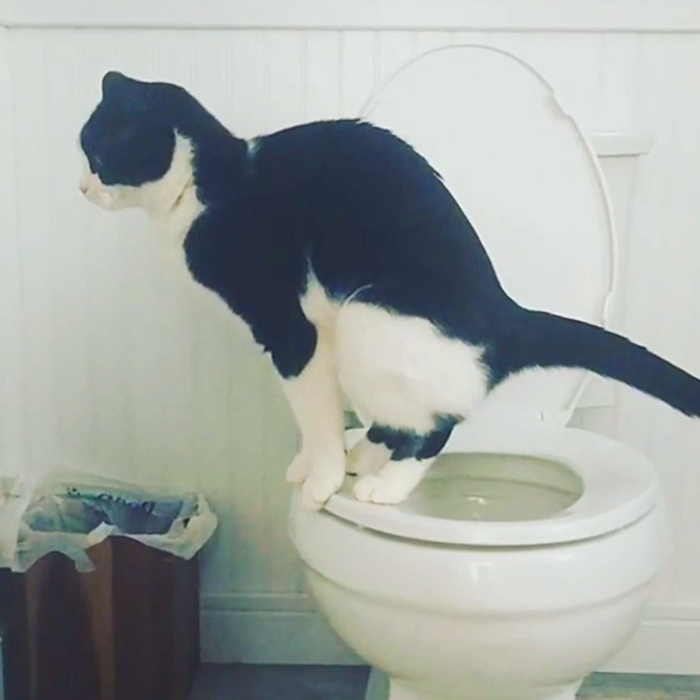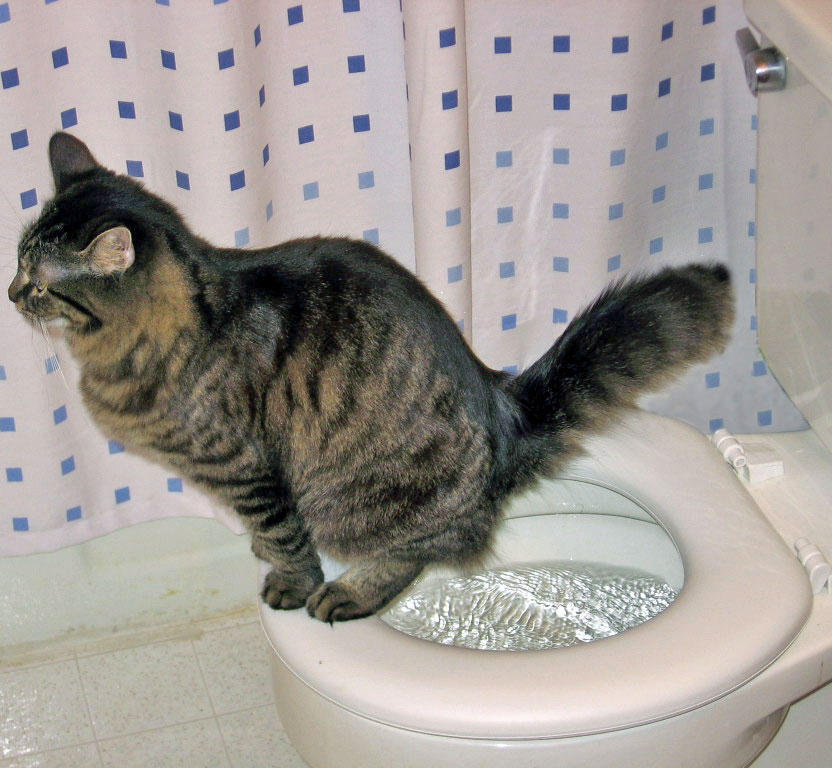Important Reasons Why Animal Waste Ought to Never Be Flushed Down the Toilet
Important Reasons Why Animal Waste Ought to Never Be Flushed Down the Toilet
Blog Article
We have uncovered this article pertaining to Can You Flush Dog and Cat Poo Down the Toilet? listed below on the net and believe it made sense to discuss it with you on this page.

When it comes to disposing of waste, particularly animal waste, many individuals often resort to the convenient choice of flushing it down the commode. However, this relatively very easy solution can have major effects for the environment and public health. In this article, we'll check out why flushing animal waste down the toilet is a bad idea and give different methods for correct disposal.
Intro
Correct garbage disposal is crucial for keeping environmental sustainability and public health. While it might seem harmless to purge animal waste down the bathroom, it can cause various problems, both for the environment and human health.
Risks of flushing animal waste
Ecological influence
Flushing pet waste presents damaging germs and pathogens into rivers, which can negatively impact aquatic ecological communities. These pathogens can infect water resources and injury aquatic life, interfering with delicate ecosystems.
Public health worries
Animal waste contains dangerous germs such as E. coli and Salmonella, which can position major wellness threats to human beings. Purging animal waste down the toilet can infect water materials, resulting in the spread of illness and infections.
Alternatives to flushing
Rather than flushing pet waste down the bathroom, there are numerous alternative disposal approaches that are much more eco-friendly and hygienic.
Composting
Composting animal waste is an environment-friendly method to throw away it. By composting, raw material is broken down into nutrient-rich dirt, which can be used to fertilize gardens and plants.
Land fill disposal
Throwing away animal waste in a landfill is an additional choice. While not as environmentally friendly as composting, it is a more secure choice to flushing, as it stops the contamination of water resources.
Animal garbage disposal systems
There are customized animal garbage disposal systems readily available that safely and hygienically deal with pet waste. These systems usually use enzymes to break down waste and get rid of odors.
Steps to appropriate animal garbage disposal
To ensure proper disposal of animal waste, comply with these steps:
Scooping and nabbing waste
Regularly scoop and bag animal waste making use of naturally get more info degradable bags. This avoids waste from polluting the setting.
Using designated waste bins
Dispose of bagged pet waste in assigned waste bins, such as garden compost containers or land fill containers. Prevent flushing it down the commode at all costs.
Cleansing litter boxes and family pet locations consistently
Regularly tidy can and pet areas to prevent the buildup of waste and germs. Use pet-safe cleaning products to maintain hygiene.
Advantages of proper disposal methods
Taking on proper disposal approaches for animal waste provides several benefits:
Lowered environmental pollution
Proper disposal approaches minimize the risk of environmental pollution, shielding waterways and environments from contamination
Decreased danger of water contamination.
By preventing flushing pet waste down the bathroom, the danger of water contamination is considerably decreased, protecting public health.
Enhanced cleanliness and hygiene
Proper disposal methods advertise much better sanitation and health, producing a safer atmosphere for both people and animals.
Final thought
To conclude, purging pet waste down the toilet is hazardous to the atmosphere and public health. By embracing alternate disposal techniques and following correct waste monitoring practices, we can minimize the unfavorable impact of pet waste and contribute to a cleaner, healthier planet.
Why You Should Never Flush Cat Poop Down the Toilet
A rose by any other name might smell as sweet, but not all poop is created equal. Toilets, and our sewage systems, are designed for human excrement, not animal waste. It might seem like it couldn’t hurt to toss cat feces into the loo, but it’s not a good idea to flush cat poop in the toilet.
First and foremost, assuming your cat uses a litter box, any waste is going to have litter on it. And even the smallest amount of litter can wreak havoc on plumbing.
Over time, small amounts build up, filling up your septic system. Most litter sold today is clumping; it is made from a type of clay that hardens when it gets wet. Ever tried to scrape old clumps from the bottom of a litter box? You know just how cement-hard it can get!
Now imagine just a small clump of that stuck in your pipes. A simple de-clogger like Drano isn’t going to cut it. And that means it’s going to cost you big time to fix it.
For an amusing, graphic tale of what happens when you flush too much litter down the toilet all at once, take a few minutes to read Gene Weingarten’s 2017 Washington Post column “So that’s what happens when you flush cat litter down the toilet.”
Parasitic Contamination
Believe it or not, your healthy kitty may be harboring a nasty parasite. Only cats excrete Toxoplasma in their feces. Yet it rarely causes serious health issues in the cats that are infected. Most people will be fine too if infected. Only pregnant women and people with compromised immune systems are at risk. (If you’ve ever heard how women who are expecting are excused from litter cleaning duty, Toxoplasma is why.)
But other animals may have a problem if infected with the parasite. And human water treatment systems aren’t designed to handle it. As a result, the systems don’t remove the parasite before discharging wastewater into local waterways. Fish, shellfish, and other marine life — otters in particular — are susceptible to toxoplasma. If exposed, most will end up with brain damage and many will die.
Depending on the species of fish, they may end up on someone’s fish hook and, ultimately on someone’s dinner plate. If that someone has a chronic illness, they’re at risk.
Skip the Toilet Training
We know there are folks out there who like to toilet train their cats. And we give them props, it takes a lot of work. But thanks to the toxoplasma, it’s not a good idea.
Leave the toilet to the humans, and accept your future litter cleaning duty.

Regularly tidy can and pet areas to prevent the buildup of waste and germs. Use pet-safe cleaning products to maintain hygiene.
Advantages of proper disposal methods
Taking on proper disposal approaches for animal waste provides several benefits:
Lowered environmental pollution
Proper disposal approaches minimize the risk of environmental pollution, shielding waterways and environments from contamination
Decreased danger of water contamination.
By preventing flushing pet waste down the bathroom, the danger of water contamination is considerably decreased, protecting public health.
Enhanced cleanliness and hygiene
Proper disposal methods advertise much better sanitation and health, producing a safer atmosphere for both people and animals.
Final thought
To conclude, purging pet waste down the toilet is hazardous to the atmosphere and public health. By embracing alternate disposal techniques and following correct waste monitoring practices, we can minimize the unfavorable impact of pet waste and contribute to a cleaner, healthier planet.
Why You Should Never Flush Cat Poop Down the Toilet
A rose by any other name might smell as sweet, but not all poop is created equal. Toilets, and our sewage systems, are designed for human excrement, not animal waste. It might seem like it couldn’t hurt to toss cat feces into the loo, but it’s not a good idea to flush cat poop in the toilet.
First and foremost, assuming your cat uses a litter box, any waste is going to have litter on it. And even the smallest amount of litter can wreak havoc on plumbing.
Over time, small amounts build up, filling up your septic system. Most litter sold today is clumping; it is made from a type of clay that hardens when it gets wet. Ever tried to scrape old clumps from the bottom of a litter box? You know just how cement-hard it can get!
Now imagine just a small clump of that stuck in your pipes. A simple de-clogger like Drano isn’t going to cut it. And that means it’s going to cost you big time to fix it.
For an amusing, graphic tale of what happens when you flush too much litter down the toilet all at once, take a few minutes to read Gene Weingarten’s 2017 Washington Post column “So that’s what happens when you flush cat litter down the toilet.”
Parasitic Contamination
Believe it or not, your healthy kitty may be harboring a nasty parasite. Only cats excrete Toxoplasma in their feces. Yet it rarely causes serious health issues in the cats that are infected. Most people will be fine too if infected. Only pregnant women and people with compromised immune systems are at risk. (If you’ve ever heard how women who are expecting are excused from litter cleaning duty, Toxoplasma is why.)
But other animals may have a problem if infected with the parasite. And human water treatment systems aren’t designed to handle it. As a result, the systems don’t remove the parasite before discharging wastewater into local waterways. Fish, shellfish, and other marine life — otters in particular — are susceptible to toxoplasma. If exposed, most will end up with brain damage and many will die.
Depending on the species of fish, they may end up on someone’s fish hook and, ultimately on someone’s dinner plate. If that someone has a chronic illness, they’re at risk.
Skip the Toilet Training
We know there are folks out there who like to toilet train their cats. And we give them props, it takes a lot of work. But thanks to the toxoplasma, it’s not a good idea.
Leave the toilet to the humans, and accept your future litter cleaning duty.

We were made aware of that write-up about 10 Things You Should Never Flush Down The Toilet from a buddy on our other web blog. Sharing is nice. You never know, you will be doing someone a favor. Thanks for going through it.
Book Report this page